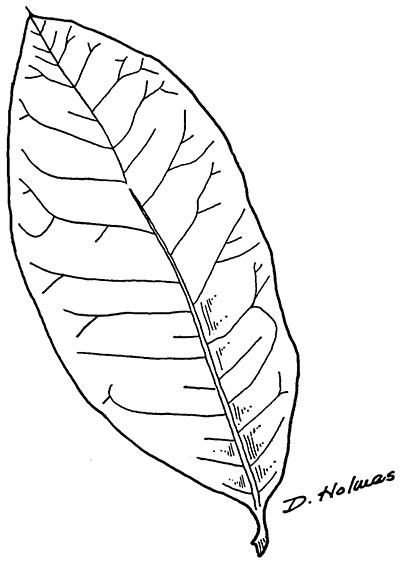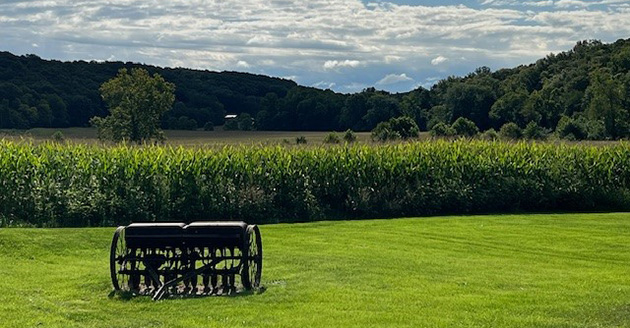The classic and trusted book "Fifty Common Trees of Indiana" by T.E. Shaw was published in 1956 as a user-friendly guide to local species. Nearly 70 years later, the publication has been updated through a joint effort by the Purdue Department of Forestry and Natural Resources, Indiana 4-H, and the Indiana Department of Natural Resources, and reintroduced as "An Introduction to Trees of Indiana."
A printed copy of the full publication is available for purchase for $7 in the Purdue Extension Education Store. The field guide helps identify common Indiana woodlot trees.
Each week, the Intro to Trees of Indiana web series will offer a sneak peek at one species from the book, paired with an ID That Tree video from Purdue Extension forester Lenny Farlee to help visualize each species as it stands in the woods. Threats to species health as well as also insight into the wood provided by the species, will be provided through additional resources as well as the Hardwoods of the Central Midwest exhibit of the Purdue Arboretum, if available. 
This week, we take a look at the ninth and final of our featured oak varieties in Indiana, the Shingle Oak or Quercus imbricaria.
The leaves of shingle oak are oblong and have entire leaf margins, without lobes or teeth, unlike all other Indiana oaks. This species also retains its shiny, bristle-tipped leaves further into the winter than other oaks. The leaves turn from a dark green in the summer to yellow and brown in the fall.
The bark is dark gray and blocky, with long running ridges. Shingle oak tends to keep its lower dead limbs attached to the tree.
The fruit is a small, rounded acorn with a thin cap that covers a third to half of the acorn. The acorns turn dark in color before losing their caps, although some may drop off the tree with their caps in tact.
Shingle oaks, which grow to 50 to 60 feet tall and are found in moist, well-drained soil along streams and on hillsides, but can occasionally be found on dry sites. The natural range of the shingle oak is the midwestern United States, including the Appalachian mountain region, Ohio, and the central Mississippi River valley. 
The Morton Arboretum states that shingle oak is fairly salt tolerant and tolerant of black walnut toxicity, and despite the fact that it has a taproot, this species can be easier to transplant than some other oaks.
Shingle oak, however, can be plagued with pests such as scale insects and two-lined chestnut borer. As with other oaks, the shingle oak should be pruned in the dormant season to avoid attracting beetles that may carry oak wilt, which can be a potential disease problem.
Shingle oaks get their name, because traditionally the species was sectioned out and made into wood shingles.
According to the Hardwood Lumber and Veneer Series, red oak, which can contain as many as 17 different species of trees including shingle oak, constitutes about one third of all the hardwood lumber produced, with northern red oak as the most preferred species.
In general, red oak lumber has a very characteristic, showy, coarse grain pattern. Wood color can range from a vary light pink to a blood red color. Red oak is rated as the best wood to plane and second best in boring. It also receives high marks for shaping, turning and steam bending.
Lumber from the red oak group weighs around 44 pounds per cubic foot, making it one of our heavier woods. It is also one of our strongest woods. Red oak lumber has been used for a variety of purposes from furniture and cabinets to millwork, caskets and hardwood flooring.
Other Resources:
ID That Tree: Shingle Oak
ID That Tree: Red Oak Group
Hardwood Lumber and Veneer Series: Red Oak Group
Morton Arboretum: Shingle Oak
Fifty Trees of the Midwest app for the iPhone, The Education Store
Native Trees of the Midwest, The Education Store
Shrubs and Woody Vines of Indiana and the Midwest, The Education Store
Investing in Indiana Woodlands, The Education Store
Forest Improvement Handbook, The Education Store
ID That Tree, Purdue Extension-Forestry & Natural Resources (FNR) YouTube playlist
Woodland Management Moment , Purdue Extension-FNR YouTube playlist





